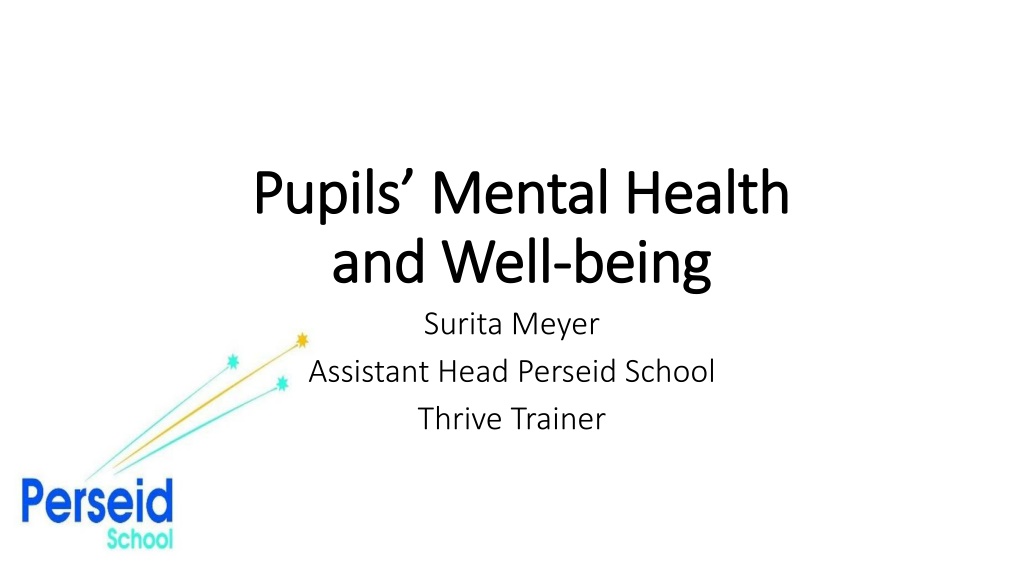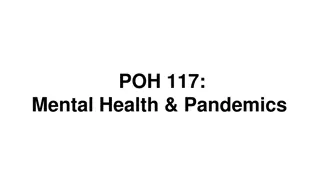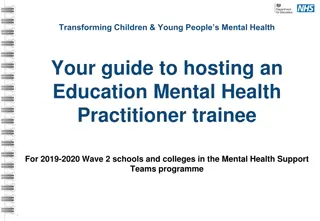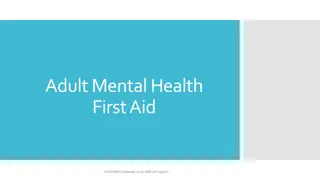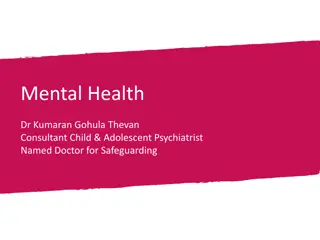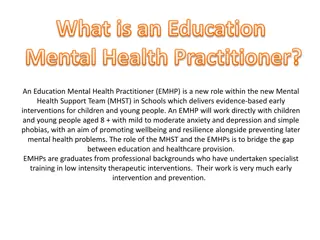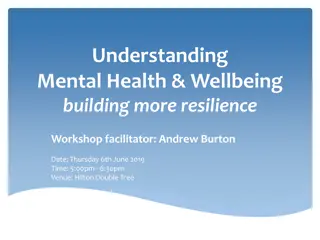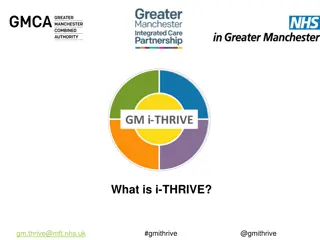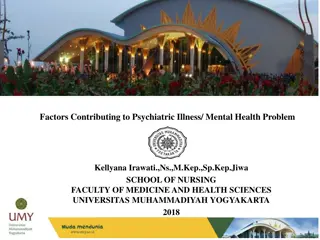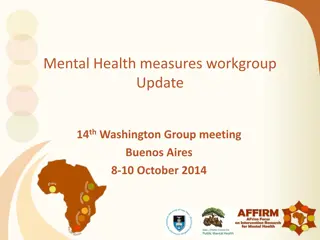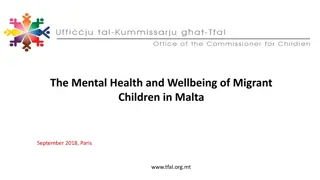Understanding Mental Health in Children: Factors and Concerns
Mental health in children is a critical aspect of their well-being. The World Health Organization defines mental health as a state of well-being where individuals can cope with life stresses and contribute positively to their community. Numerous factors, such as genetic predisposition, parental separation, and school-related issues, can impact a child's mental health. Concerns over children's mental health are on the rise, as evidenced by statistics on depression, mental disorders, and distress among young individuals. Recognizing predisposing, precipitating, perpetuating, and protective factors is crucial in promoting positive mental health in children.
Download Presentation

Please find below an Image/Link to download the presentation.
The content on the website is provided AS IS for your information and personal use only. It may not be sold, licensed, or shared on other websites without obtaining consent from the author. Download presentation by click this link. If you encounter any issues during the download, it is possible that the publisher has removed the file from their server.
E N D
Presentation Transcript
Pupils Mental Health Pupils Mental Health and Well and Well- -being Surita Meyer Assistant Head Perseid School Thrive Trainer being
There is no single accepted definition of mental health but the following definition proposed by the World Health Organisation (WHO, 2001, p.1) is frequently used. Mental Health is: Mental Health is: A state of well-being in which the individual realises his or her own abilities, can cope with the normal stresses of life, can work productively and fruitfully and is able to make a contribution to his or her own community.
The ONS survey: Mental health of children in Great Britain Mental health of children in Great Britain In a primary school with 250 pupils: In a primary school with 250 pupils: In an average class of 30, 15 In an average class of 30, 15- -year year- -old pupils: old pupils: 3 Children will be seriously depressed 3 Young People could have a mental disorder 11 Children will be suffering significant distress 10 Young People are likely to have witnessed their parents separate 12 Children will be affected by phobias 1 Young People could have experienced the death of a 15 Children will have a conduct disorder parent 7 Young People are likely to have been bullied 6 Young People may be self-harming
Increasing concerns for childrens mental health Mental Health Taskforce , 2017
Predisposing Factors: Predisposing Factors: Precipitating Factors: Precipitating Factors: Perpetuating Factors: Perpetuating Factors: Protective Factors: Protective Factors: The factors that The factors that trigger trigger the The factors that maintain maintain the The factors that prevent any deterioration prevent any deterioration in increase vulnerability increase vulnerability to onset or exacerbation of psychological problems and the condition develop psychological the psychological problems. prevents its resolution. problems Genetic Parental separation & Loss Perinatal complications Physical injuries, Disabilities and diseases Intelligence Prenatal complications Parental illness Parenting style Disorganised family environments Child abuse and maltreatment School related factors Influence of media Good physical health & No history of illness, injury or disability. Uneventful prenatal or perinatal history High intellectual ability Secure parental attachment & authoritative parenting style Preschool early intervention programs & Preschool early intervention programs & healthy school environment healthy school environment Involvement with peer group
